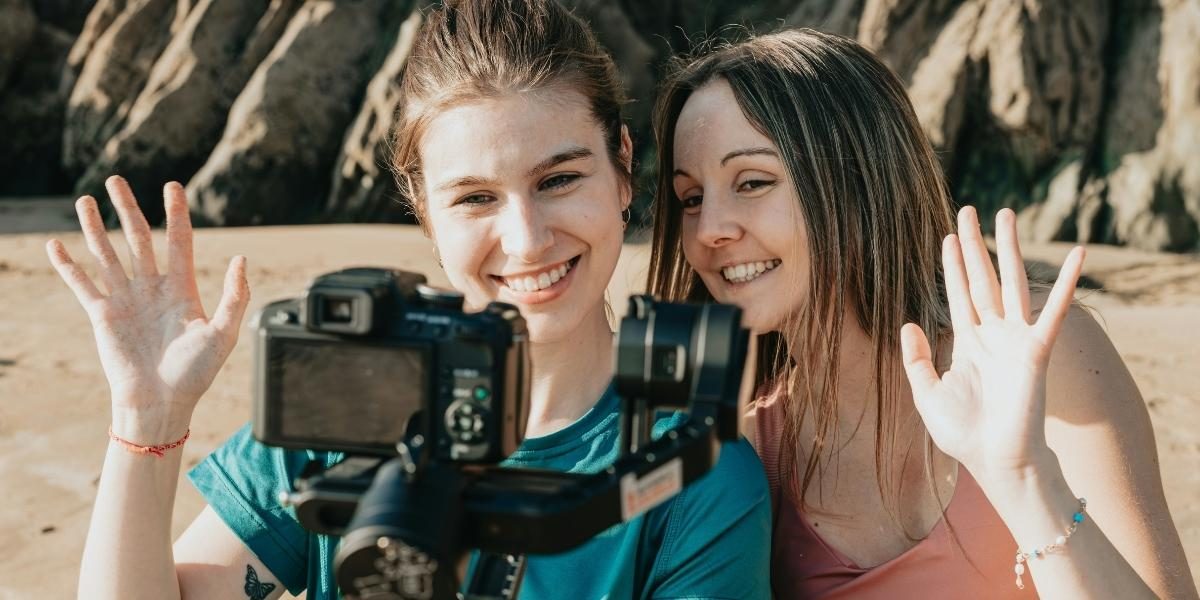In the digital age, vlogging has become one of the most influential forms of media, particularly in the United States. A combination of video blogging and personal storytelling, vlogging allows creators to connect with audiences in a deeply authentic way. The rise of platforms like YouTube, TikTok, and Instagram has enabled individuals to share their daily lives, opinions, and creativity with millions. What began as a niche activity has now evolved into a global phenomenon, shaping online culture, marketing, and entertainment. This article explores the American vlogging landscape, the creators who drive it, the culture that has emerged, and the lasting impact it has on audiences and industries alike.
Read Also: Mastering Video Marketing: Creating Viral Content for Social Media
What is Vlogging and How Did it Become a Cultural Phenomenon?
Vlogging, short for “video blogging,” is the act of creating and uploading video content that showcases a creator’s life, opinions, interests, or expertise. Unlike traditional forms of media, vlogs are typically produced by individuals, often in a raw and unpolished format, making them more relatable and authentic. This immediacy and accessibility have played a major role in vlogging’s rise, as viewers feel they are getting an inside look at the creator’s life and experiences.
Vlogging began gaining significant popularity in the early 2000s, with platforms like YouTube providing a space for creators to upload and share their videos with a global audience. The first wave of vlogging pioneers—such as Casey Neistat, Smosh, and Bethany Mota—built dedicated followings by offering a mix of daily life, humor, and lifestyle advice. Over time, vlogging evolved into a more polished form of content creation, with creators focusing on storytelling, high-quality production, and niche topics.
The rise of platforms like TikTok and Instagram Stories in the 2010s further propelled vlogging into mainstream culture. Short-form video platforms democratized vlogging, allowing anyone with a smartphone to create and share content. As social media culture evolved, vlogging became more than just a personal hobby—it became a lifestyle and, for many, a career path.
Who Are the Key Creators in the American Vlogging Scene?
American vlogging is home to a diverse range of creators who come from different backgrounds, ages, and interests. These creators have leveraged platforms to build personal brands, develop large online followings, and even monetize their content through sponsorships, merchandise, and more. Some of the most notable vloggers include Casey Neistat, Lilly Singh, David Dobrik, and Emma Chamberlain, who have reshaped the American entertainment landscape through their creativity and authenticity.
Casey Neistat is perhaps one of the most well-known figures in the vlogging community. With his high-energy, cinematic style and unique storytelling approach, Neistat helped elevate vlogging to a professional level. His daily vlogs not only captured his personal life but also his adventures, which often included humanitarian projects and collaborations with major brands. Neistat’s vlogging style has inspired countless creators to embrace a more polished, cinematic approach to content creation.
Lilly Singh turned her YouTube channel into a global platform, using humor and cultural commentary to connect with diverse audiences. Singh, who gained fame through her comedic skits and vlogs, transitioned into television, hosting her own late-night talk show, A Little Late with Lilly Singh, proving that vlogging can lead to broader entertainment opportunities.
David Dobrik, known for his energetic pranks, challenges, and collaborations with fellow influencers, quickly gained millions of followers on YouTube and Instagram. His vlogs often feature humorous interactions with his friends, showcasing his spontaneous and unfiltered approach to content creation.
Emma Chamberlain, who became a sensation with her quirky, self-deprecating humor and candid approach to vlogging, has built a loyal fan base, especially among Gen Z. Her relatable, “unpolished” style revolutionized the aesthetic of vlogs, moving away from perfection and embracing authenticity.
These creators and many others have become not just influencers, but cultural icons, helping to shape the trajectory of vlogging and its influence on pop culture, fashion, and lifestyle.
How Has Vlogging Shaped American Culture?
Vlogging has played a significant role in shaping American culture, particularly in how people perceive entertainment, lifestyle, and fame. The personal and interactive nature of vlogs has fostered a sense of intimacy between creators and their audiences. Viewers often feel that they are part of the vlogger’s life, building a strong sense of connection and loyalty. This shift has influenced traditional forms of media, leading to more authenticity in content creation.
One of the most significant cultural shifts brought on by vlogging is the rise of influencer culture. Influencers—people who have amassed large followings on social media—now hold significant sway over consumer behavior, political views, and social trends. Companies have recognized the power of influencers, leading to the rise of influencer marketing. Today, brands frequently partner with vloggers to promote products, services, and campaigns, as they see vlogs as a more genuine and effective way to connect with consumers compared to traditional advertising.
Vlogging has also contributed to the democratization of fame. In the past, becoming famous required access to major media outlets or entertainment industry connections. Now, anyone with a camera and an internet connection can create viral content and attract a global audience. This has led to the rise of internet celebrities—individuals who have built their careers through online platforms and social media.
Vlogging has had a profound influence on trends. Vloggers are often at the forefront of fashion, technology, beauty, and lifestyle trends, with their followers looking to them for inspiration. Their influence has reshaped how people view popular culture and consumer products, especially among younger generations.
What Impact Has Vlogging Had on the Entertainment Industry?
Vlogging’s impact on the entertainment industry has been profound, as it has introduced a new form of content creation that emphasizes authenticity over traditional scripted performances. Vloggers now sit alongside mainstream stars in terms of influence, often bridging the gap between online and offline media. Some creators, like Rhett and Link, have built entire networks based on their vlogging success, turning their YouTube channel into a multi-million-dollar enterprise.
Vlogging has changed the way people consume media. Television, once the dominant form of entertainment, now shares space with online platforms. Vloggers have created their own digital networks, such as Podcasts, Web series, and live streaming, all of which are gaining a steady audience, particularly among younger viewers. With the rise of platforms like YouTube Premium, Twitch, and Instagram TV, vlogging content is often seen as equally influential as television shows or movies.
Vloggers are also using their platforms to venture into entrepreneurship, creating brands, launching products, and starting businesses. This trend has had a major influence on how entertainment and business intersect, with influencers now being recognized not just for their content but for their ability to create and sell products to their audience. Merchandising has become a major revenue stream for vloggers, with creators like Logan Paul and PewDiePie generating millions through merchandise sales.
Read Also: How Social Media Influencers and Brand Ambassadors Are Shaping the Creator Economy
What’s Next for Vlogging in the American Landscape?
The future of vlogging is looking even more dynamic, with new technologies and trends emerging that will further shape the industry. As virtual reality (VR) and augmented reality (AR) become more mainstream, vlogging could evolve into a more immersive experience, allowing viewers to interact with creators in new and exciting ways. The integration of live-streaming platforms, AI, and machine learning may also bring more personalized content to viewers, further blurring the lines between entertainment and interactive media.
Vlogging will likely continue to thrive in the digital ecosystem, evolving alongside shifts in technology, social media platforms, and audience expectations. As more creators enter the space and new platforms emerge, vlogging will likely remain a significant cultural force, influencing not just entertainment but how society engages with creativity, marketing, and communication.








